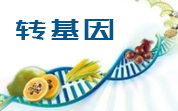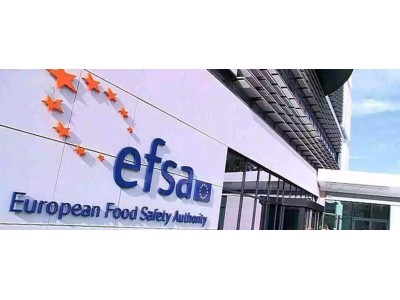сђђсђђТЇ«С║єУДБ№╝їУ┐ЎуДЇжБЪтЊЂжЁХТў»ућ░Чa href='//www.sqrdapp.com/news/tag_462.html' class='zdbq' title='жЮъУйгтЪ║тЏауЏИтЁ│жБЪтЊЂУхёУ«»' target='_blank'>жЮъУйгтЪ║тЏаТЏ▓жюЅт▒ъУЈїТафGD-FALућЪС║Дуџё№╝їТЌетюеућеС║јуЅЏтЦХтіатиЦСИГуџёС╣│у│ќТ░┤УДБсђЂЧ/div>
сђђсђђу╗ЈУ┐ЄУ»ёС╝░№╝їСИЊт«Хт░Ју╗ёУ«цСИ║№╝їтюежбёТюЪуџёСй┐ућеТЮАС╗ХСИІ№╝їСИЇУЃйТјњжЎцжЦ«жБЪТџ┤жю▓т╝ЋУхиУ┐ЄТЋЈтЈЇт║ћуџёжБјжЎЕ№╝їСйєУ┐ЎуДЇтЈ»УЃйТђДУбФУ«цСИ║тЙѕСйјсђѓтЪ║С║јт»╣жЂЌС╝аТ»њТђДуџётЁХСйЎтЁ│Т│есђЂт»╣тцДж╝аУ┐ЏУАїуџ?0тцЕжЄЇтцЇтЅѓжЄЈтЈБТюЇТ»њТђДуаћуЕХуџёСИЇУХ│С╗ЦтЈітЁ│С║јжБЪтЊЂжЁХСИГу╝║С╣ЈућЪС║ДУЈїТафуџёТ┤╗у╗єУЃъуџёу╝║тц▒ТЋ░ТЇ«№╝їУ»ёС╝░т░Ју╗ёТЌаТ│Ћт░▒У»ЦжБЪтЊЂжЁХуџёт«ЅтЁеТђДтЙЌтЄ║у╗ЊУ«║сђѓжЃетѕєтјЪТќЄТіЦжЂЊтдѓСИІ№╝џ
сђђсђђThe food enzyme д┬-galactosidase (EC 3.2.1.23) is produced with the non-genetically modified Aspergillus sp. strain GD-FAL by Godo Shusei Co., Ltd. The food enzyme is intended to be used in milk processing for the hydrolysis of lactose. The absence of viable cells of the production organism in the food enzyme was not demonstrated. ba
sed on the assumption that all milk/dairy products are enzymatically treated, dietary exposure to the food enzymeеCtotal organic solids (TOS) was estimated to be up to 0.301 mg TOS/kg body weight per day in European populations. The data provided did not allow co
ncerns of genotoxicity of the food enzyme to be excluded. The systemic toxicity could not be assessed in the absence of an appropriate repeated dose 90-day oral toxicity study. Consequently, a margin of exposure was not calculated. A search for the similarity of the amino acid sequence of the food enzyme to known allergens was made and no match was found. The Panel co
nsidered that, under the intended co
nditions of use, the risk of allergic reactions by dietary exposure cannot be excluded, but the likelihood for this to occur is low. ba
sed on the remaining co
ncerns on genotoxicity, the inadequacies of the 90-day repeated dose oral toxicity study in rats and the missing data regarding the absence of viable cells of the production strain in the food enzyme, the Panel could not co
nclude on the safety of this food enzyme.
сђђсђђ
ТюгТќЄућ▒жБЪтЊЂС╝ЎС╝┤уйЉжБЪтЊЂУхёУ«»СИГт┐Ѓу╝ќУЙЉ№╝їТюЅС╗╗СйЋуќЉжЌ«№╝їУ»иУЂћу│╗news@www.sqrdapp.comсђЂЧ/span>
уЏИтЁ│Тћ┐уГќУДБУ»╗










 тю░тї║№╝ЎЧ/font>
тю░тї║№╝ЎЧ/font>

 ТгДуЏЪУ»ёС╝░УйгтЪ║тЏаујЅу▒│MO
ТгДуЏЪУ»ёС╝░УйгтЪ║тЏаујЅу▒│MO
 ТгДуЏЪУ»ёС╝░СИђуДЇж║дУійу│ќТиђ
ТгДуЏЪУ»ёС╝░СИђуДЇж║дУійу│ќТиђ уЙјтЏйТІЪТњцжћђУІЦт╣▓УѓЅу▒╗тЈЅЧ/a>
уЙјтЏйТІЪТњцжћђУІЦт╣▓УѓЅу▒╗тЈЅЧ/a> ж▓ЂтЁгуйЉт«Ѕтц 37060202000128тЈХЧ/a>
ж▓ЂтЁгуйЉт«Ѕтц 37060202000128тЈХЧ/a>



